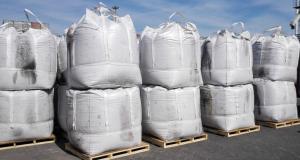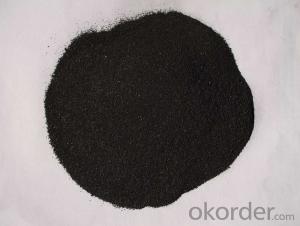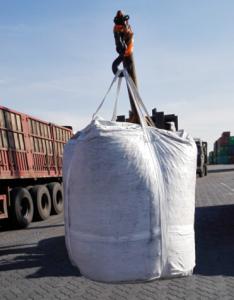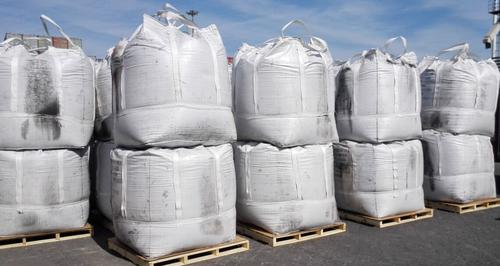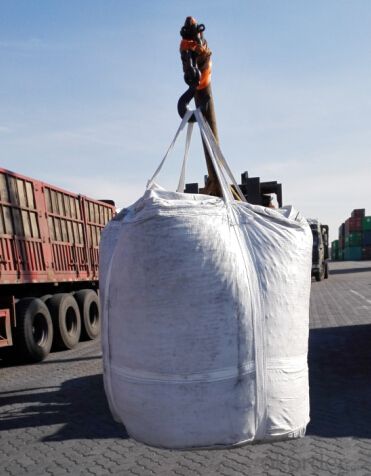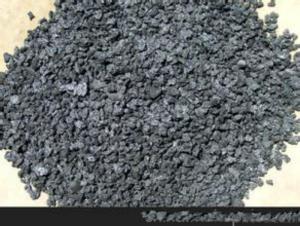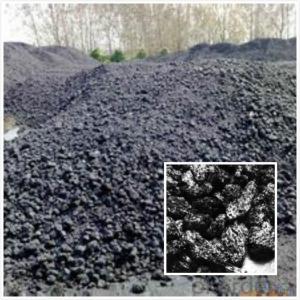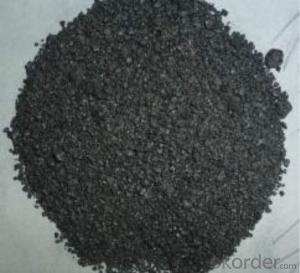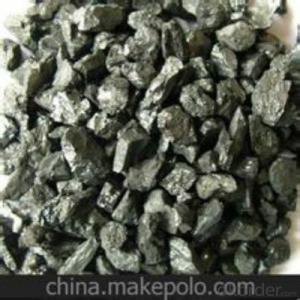Petroleum Coke Type High FC Carbon Additive
- Loading Port:
- Tianjin
- Payment Terms:
- TT or LC
- Min Order Qty:
- 20 m.t.
- Supply Capability:
- 1500 m.t./month
OKorder Service Pledge
OKorder Financial Service
You Might Also Like
Quick Details
Place of Origin: China (Mainland)
Application: carben additives
Dimensions: fix carben morethan98%,sulphur less5%
Chemical Composition: nature graphite powder
attribute: briquette grade
shape: <SPAN style="BORDER-BOTTOM: 0px; BORDER-LEFT: 0px; PADDING-BOTTOM: 0px; MARGIN: 0px; PADDING-LEFT: 0px; PADDING-RIGHT: 0px; FONT-FAMILY: inherit; WORD-WRAP: break-word; VERTICAL-ALIGN: baseline; BORDER-TOP: 0px; BORDER-RIGHT: 0px; PADDING-TOP: 0px" class=attr-value title=block/powder>block/powder
classify: carbon additives/petroleum coke
Packaging & Delivery
| Packaging Details: | 50kg/bag,25kg/bag or as customer requirement |
|---|---|
| Delivery Detail: | 20DAYS after payment |
Specifications
Petroleum Coke Type High FC Carbon Additive
Petroleum coke products can be divided into needle coke, sponge coke, projectile coke and coke breeze four kinds.
Calcined Petroleum Coke
F.C.: 98.5%MIN
ASH: 0.8% MAX
V.M.: 0.7%MAX
S:0.5%MAX
Moisture: 0.5%MAX
Structure
Petroleum Coke Type High FC Carbon Additive
Shape: granule
- Dimensions: 0-1mm, 1-5mm, 1-6mm, 2-8mm, etc
- Product Type: Carbon Additive
- C Content (%): 98-99.5% MIN
- Working Temperature: -
- S Content (%): 0.5%-0.7%MAX
- Ash Content (%): 0.7%MAX
- Volatile:0.8%MAX
- Moisture: 0.5% MAX
- ADVANTAGE: low ash & sulfur
- COLOR: Black
Feature
Petroleum Coke Type High FC Carbon Additive
Physics and chemistry performance :
Unit | Index | |||||
No.1 | No.2 | No.3 |
| |||
Density | g/cm3 | 2.04 | 2.00 | 2.00 | ||
sulphur content | %≤ | 0.5 | 1.0 | 2.5 | ||
volatility | %≤ | 0.5 | 0.5 | 0.5 | ||
ash content | %≤ | 0.5 | 0.5 | 0.5 | ||
moisture | %≤ | 0.3 | 0.5 | 0.5 | ||
charcoal | %≤ | 98.5 | 98.0 | 98.0 | ||
Image
Petroleum Coke Type High FC Carbon Additive


FAQ:
Petroleum Coke Type High FC Carbon Additive
How to classify calcined petroleum coke?
1) According to difference of sulfur content, can be divided into high sulfur coke (sulfur content more than 4%), sulphur in coke sulfur content (2% 4%) and low sulfur coke (sulfur content below 2%).
2) Petroleum coke products can be divided into needle coke, sponge coke, projectile coke and coke breeze four kinds:
3) Needle coke, has obvious needle-like structure and fiber texture, mainly used for steel-making in high power and ultra-high power graphite electrode. As a result of needle coke in sulfur content, ash content, volatile matter and true density and so on have strict quality requirements, so the production process of needle coke and raw materials have special requirements.
4) The sponge coke, high chemical reactivity, low content of impurities, mainly used in the aluminum industry and carbon industry.
5) Focal or spherical coke: the projectile shape is round, diameter 0.6-30 mm, usually from the production of high sulphur, high asphaltic residual oil, can only be used as industrial fuel power generation, cement etc.
6) Coke breeze: fluidized coking process, the fine particles (0.1- 0.4 mm) in diameter, high volatile, high expansion coefficient, cannot be directly used for electrode preparation and carbon industry.
Advantage:
Petroleum Coke Type High FC Carbon Additive
1. High quality and competitive price.
2. Timely delivery.
3. If any item you like. Please contact us.
Your sincere inquiries are typically answered within 24 hours.
- Q: What are the different types of carbon fibers?
- There are several different types of carbon fibers, including standard modulus carbon fiber, intermediate modulus carbon fiber, high modulus carbon fiber, and ultra-high modulus carbon fiber. These types vary in their strength, stiffness, and cost, making them suitable for different applications and industries.
- Q: What are the effects of carbon emissions on the stability of mangrove forests?
- Carbon emissions have significant effects on the stability of mangrove forests. Mangrove forests are highly vulnerable to changes in climate, and increased carbon emissions contribute to global warming and climate change, which directly impact these ecosystems. One of the main effects of carbon emissions on mangrove forests is rising sea levels. As carbon dioxide is released into the atmosphere, it traps heat and contributes to the warming of the planet. This leads to the melting of polar ice caps and glaciers, causing sea levels to rise. The increased sea levels pose a threat to mangroves as they are adapted to grow in intertidal zones, where they are exposed to both saltwater and freshwater. With rising sea levels, mangroves may experience increased inundation, which can lead to their submergence and eventual death. Furthermore, carbon emissions also contribute to ocean acidification. As carbon dioxide dissolves in seawater, it forms carbonic acid, which alters the pH balance of the ocean. Mangroves rely on the ocean for their nutrient supply and reproductive processes. Ocean acidification can impede the availability of essential nutrients, such as nitrogen and phosphorus, which are vital for the growth and survival of mangroves. Additionally, the acidification of seawater can negatively affect the reproduction and development of mangrove species, leading to a decline in their population. Carbon emissions also contribute to changes in weather patterns, such as increased frequency and intensity of storms and hurricanes. Mangroves act as a natural barrier, protecting coastal areas from the destructive impacts of these extreme weather events. However, with intensified storms and hurricanes, the stability of mangrove forests is compromised. Strong winds, heavy rainfall, and storm surges can uproot or damage mangrove trees, disrupting their structure and reducing their ability to provide coastal protection. Lastly, carbon emissions contribute to the overall warming of the planet, which can lead to changes in precipitation patterns. Mangroves rely on a delicate balance of freshwater and saltwater for their survival. Alterations in precipitation patterns, such as prolonged droughts or increased rainfall, can disrupt this balance and negatively impact mangroves. Droughts can lead to water scarcity, causing mangroves to become stressed and more susceptible to diseases and pests. On the other hand, increased rainfall can lead to excessive amounts of freshwater, diluting the salinity of mangrove habitats and affecting their growth and reproduction. In conclusion, carbon emissions have detrimental effects on the stability of mangrove forests. Rising sea levels, ocean acidification, changes in weather patterns, and alterations in precipitation patterns all contribute to the degradation and loss of mangrove ecosystems. It is crucial to reduce carbon emissions and mitigate the effects of climate change to ensure the long-term survival and stability of mangrove forests.
- Q: How does carbon dioxide affect fuel efficiency?
- Carbon dioxide does not directly affect fuel efficiency, but it is a byproduct of the combustion of fossil fuels, which are commonly used as fuel in vehicles. When fossil fuels are burned, carbon dioxide is released into the atmosphere, contributing to the greenhouse effect and climate change. However, the increased concentration of carbon dioxide in the atmosphere does not have a direct impact on the fuel efficiency of a vehicle. Fuel efficiency is primarily determined by the design and technology of the vehicle, including factors such as engine efficiency, weight, aerodynamics, and driving conditions. Nevertheless, reducing carbon dioxide emissions is crucial for mitigating climate change and promoting a sustainable future.
- Q: What are the consequences of increased carbon emissions on social inequality?
- Increased carbon emissions have profound consequences on social inequality. The primary consequence is the exacerbation of existing inequalities, particularly in disadvantaged communities. Firstly, the effects of climate change, driven by carbon emissions, disproportionately impact marginalized communities, including low-income neighborhoods and developing countries. These communities often lack the resources and infrastructure necessary to withstand extreme weather events, such as hurricanes or flooding, resulting in greater vulnerability and loss of livelihoods. Secondly, the economic consequences of carbon emissions, such as rising energy costs and reduced agricultural productivity, further widen the gap between the rich and the poor. Affluent individuals may be able to adapt to these changes, while those with limited financial resources struggle to cope, leading to increased poverty and socio-economic disparities. Moreover, increased carbon emissions contribute to health disparities. Polluted air, resulting from carbon emissions, disproportionately affects low-income neighborhoods, where industrial plants and highways are often located. This leads to higher rates of respiratory diseases and other health issues among marginalized communities, exacerbating existing health inequalities. Furthermore, the impacts of climate change, driven by carbon emissions, can lead to forced displacement and migration. As environmental conditions deteriorate, communities may be forced to relocate, often resulting in social disruption and increased competition for resources. This can further marginalize vulnerable populations and create conflicts over land and access to resources. Lastly, the consequences of carbon emissions on social inequality extend globally. Developing countries, which contribute less to carbon emissions but bear a disproportionate burden of the impacts, face significant challenges in addressing climate change. Limited resources and technological capabilities hinder their ability to adapt and mitigate the effects, perpetuating global inequalities. In conclusion, increased carbon emissions have grave consequences on social inequality. They worsen existing disparities, particularly affecting marginalized communities, through the disproportionate impacts of climate change, economic hardships, health disparities, forced displacement, and global inequalities. Addressing carbon emissions and climate change is crucial not only for environmental sustainability but also for promoting social justice and reducing social inequality.
- Q: Carbon content of fly ash and fly ash roasted vector what is the relationship?
- The higher the carbon content, the greater the adsorption, the lower the activity index.In the process of coal ash processing, there are still many places to use the fly ash mill. The carbon content of fly ash is related to the boiler property and combustion technology. China's newly built modern power plant, the content of fly ash can be reduced to l% ~ 2%, and some power plants may also be as high as 20%.
- Q: Recently bought an alarm clock, it is recommended to use carbon batteries. Nanfu battery is not good for the movement.
- Nanfu is generally alkaline battery, the alarm clock movement, the power is too large, will damage the movement. Supermarkets generally have many brands of carbon batteries, you can follow their favorite and ability to buy. There are deer, wild horses, PHILPS and so on.
- Q: What is carbon nanocomposite?
- A carbon nanocomposite is a material that combines carbon nanotubes or graphene with a matrix material like polymers or metals to form a composite material. Usually, small amounts of carbon nanotubes or graphene, often in the form of nanoparticles, are added to improve the mechanical, electrical, and thermal properties of the composite material. Carbon nanotubes are cylindrical structures made of carbon atoms arranged in a hexagonal lattice, while graphene is a single layer of carbon atoms arranged in a two-dimensional lattice. These carbon-based materials have exceptional properties, such as high strength, electrical conductivity, and thermal conductivity. When incorporated into a composite material, these properties can be transferred to the overall structure, resulting in improved performance. Various industries and applications have explored the use of carbon nanocomposites. For instance, in aerospace, researchers have investigated these materials for their lightweight and high-strength properties, which could potentially enhance the fuel efficiency and durability of aircraft components. In electronics, carbon nanocomposites show promise for developing high-performance sensors, conductive films, and energy storage devices. Moreover, they have been studied for potential applications in medical devices, automotive parts, and energy storage systems. In summary, carbon nanocomposites offer the opportunity to create materials with enhanced properties by leveraging the unique characteristics of carbon nanotubes or graphene. However, challenges in production and scalability still exist, and further research is needed to optimize their performance and cost-effectiveness for various applications.
- Q: How is carbon used in the production of construction materials?
- Carbon is used in the production of construction materials in several ways. One of the most common applications is in the production of steel, which is a vital material in the construction industry. Carbon is a key component in the iron and steel-making process, as it is combined with iron to create a stronger and more durable material. The addition of carbon to iron forms a compound known as steel, which has excellent structural properties and can be used to construct various components of buildings, such as beams, columns, and reinforcement bars. Additionally, carbon fibers are increasingly being used in the production of construction materials. Carbon fibers are lightweight, yet incredibly strong and stiff, making them ideal for reinforcing concrete and other materials. When carbon fibers are added to concrete, they enhance its strength and durability by reducing cracking and improving its resistance to impact and corrosion. This allows for the construction of structures that are more resilient and longer-lasting. Furthermore, carbon is used in the production of composite materials, which are becoming popular in construction. Carbon composites are made by combining carbon fibers with a polymer matrix, resulting in a material that is lightweight, yet strong and rigid. These composites are used in various construction applications, such as building panels, roofing, and bridges, as they offer high strength-to-weight ratios and excellent resistance to environmental factors. In summary, carbon plays a crucial role in the production of construction materials. It is used in the creation of steel, which is a fundamental component of buildings, and its fibers are employed to reinforce concrete and other materials. Additionally, carbon composites provide lightweight and high-strength solutions for construction applications. By harnessing the properties of carbon, construction materials can be made stronger, more durable, and more sustainable.
- Q: Made of high strength structural partsThe market quality of the carbon fiber plate is too much, the price is low, do not know how to choose. A knowledgeable friend can introduce larger enterprises? The quality of the carbon fiber board produced must be better and the performance should be stable!
- You are not for the prestressing bar, if you find the building reinforcement for Tianjin Beijing card, if you do the structure reinforcement for Jiangsu and Wuxi via the new material industry, these are relatively well-known.
- Q: What are the different types of carbon-based composites?
- There are several different types of carbon-based composites, including carbon fiber reinforced polymers (CFRP), carbon nanotube composites, carbon nanofiber composites, and graphene composites.
Send your message to us
Petroleum Coke Type High FC Carbon Additive
- Loading Port:
- Tianjin
- Payment Terms:
- TT or LC
- Min Order Qty:
- 20 m.t.
- Supply Capability:
- 1500 m.t./month
OKorder Service Pledge
OKorder Financial Service
Similar products
Hot products
Hot Searches
Related keywords
